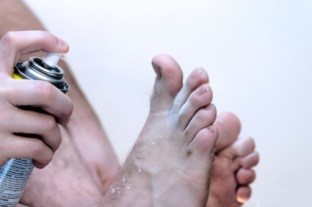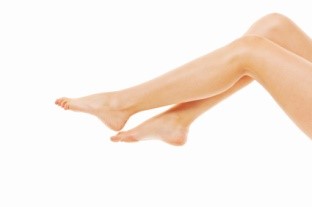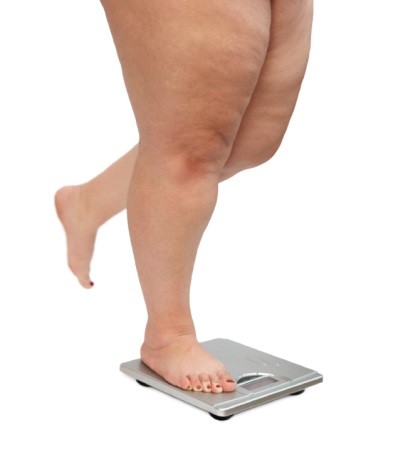Blog
Health Benefits of Swimming
 When the warmer months begin to come through, pools open up bringing light to the health benefits of swimming. Since swimming involves nearly every muscle in the body, it is a great way to improve blood circulation in the feet and in many other parts of the body. The activity is also highly aerobic and can burn many calories without having to put the same amount of pressure on the ankles and feet as activities such as running or other forms of cardio. Swimming also helps stretch the ligaments in the body that may become less flexible with injury or age.
When the warmer months begin to come through, pools open up bringing light to the health benefits of swimming. Since swimming involves nearly every muscle in the body, it is a great way to improve blood circulation in the feet and in many other parts of the body. The activity is also highly aerobic and can burn many calories without having to put the same amount of pressure on the ankles and feet as activities such as running or other forms of cardio. Swimming also helps stretch the ligaments in the body that may become less flexible with injury or age.
Swimming is a great way to exercise the feet. If you have any questions regarding the benefits of swimming on the feet, consider contacting Dr. Michael E. Newman of Pennsylvania. Our doctor will explain the unique health advantages this activity has and recommend some simple exercises.
Benefits of Swimming and Foot care
Our feet receive the most stress on a daily basis. Walking, running, and long standing contribute to pain and stress on the feet. Swimming helps promote circulation and keep the body feeling great and healthy.
Benefits of swimming:
Improve blood circulation
- Swimming is a good, safe way to get in extra physical activity and improve circulation, without causing further trauma to the feet
Relieve aches or pains
- It takes all the pressure off of them, allowing the feet to relax and recover, and improves blood flow to them.
Circulation overall for diabetics
- Swimming contributes to blood flow, and increase oxygen levels within the body.
Reduce foot inflammation
- Swimming in warm water can increase blood flow and make it easier to move and stretch the afflicted foot. The feet are also exposed in water, giving them much needed air.
Swimming the helpful alternative:
Many people like the elderly and diabetics suffer from weakened muscles and joints. A water sport like swimming will support the body, thus allowing him or her to move freely. Blood flow circulation is a main trigger to tired inflamed feet.
If you have any questions, please feel free to contact our offices located in Plymouth Meeting and Ambler, PA. We offer the latest in diagnostic and treatment technologies to meet all your needs.
UK Woman Called Emergency Number because of Athlete’s Foot
 A woman from Conwy reportedly dialed 999—the U.K.’s 911—because she had athlete’s foot. This case was just one of the many “ludicrous” phone calls made to ambulance chiefs in Wales over the span of seven months.
A woman from Conwy reportedly dialed 999—the U.K.’s 911—because she had athlete’s foot. This case was just one of the many “ludicrous” phone calls made to ambulance chiefs in Wales over the span of seven months.
Other calls included a diner who felt their face burning after eating a red hot chilli pepper, someone who had two cotton buds stuck down their ear, a man who was feeling tired, and a man who had broken his two teeth and wanted dental work. Another woman from Rhyl called paramedics after pulling her side reaching for a phone charger.
Athlete’s foot is an inconvenient condition, but nothing to call an ambulance for. If you are concerned about your athlete’s foot contact Dr. Michael E. Newman of Pennsylvania. Our doctor will treat your foot and ankle needs.
Athlete’s Foot: The Sole Story
Athlete's foot, also known as tinea pedis, can be an extremely contagious foot infection. It is commonly contracted in public changing areas and bathrooms, dormitory style living quarters, around locker rooms and public swimming pools, or anywhere your feet often come into contact with other people.
Solutions to Combat Athlete’s Foot
- Hydrate your feet by using lotion
- Exfoliate
- Buff off nails
- Use of anti-fungal products
- Examine your feet and visit your doctor if any suspicious blisters or cuts develop
Athlete’s foot can cause many irritating symptoms such as dry and flaking skin, itching, and redness. Some more severe symptoms can include bleeding and cracked skin, intense itching and burning and even pain when walking. In the worst cases, athlete’s foot can cause blistering as well. Speaking to your podiatrist will give you a better understanding of the different causes of athlete’s foot, as well as helping you figure out which treatment options are best for you.
If you have any questions please feel free to contact our offices located in Plymouth Meeting and Ambler, PA. We offer the newest diagnostic tools and technology to treat your foot and ankle needs.
Read more about athlete’s foot.
Platelet Therapy Found Helpful with Foot and Ankle Injuries
 According to recent research, medical professionals have access to platelet rich plasma (PRP) that has the potential to treat injuries such as Achilles tendonitis, plantar fasciitis, and chronic ulcerations. When injuries occur, the platelets inside of body naturally go to the point of injury begin a healing process, which may be why platelet therapy has been so successful.
According to recent research, medical professionals have access to platelet rich plasma (PRP) that has the potential to treat injuries such as Achilles tendonitis, plantar fasciitis, and chronic ulcerations. When injuries occur, the platelets inside of body naturally go to the point of injury begin a healing process, which may be why platelet therapy has been so successful.
However, the area of the body, the health of the patient, and the seriousness of the injury are all factors in how effective the therapy may be. So far PRP therapy has been found to be the most helpful in soft tissue foot and ankle injuries. Many medical professionals believe this type of therapy could be an effective alternative to surgery.
If you are experiencing any foot or ankle pain and would like to consider therapy, contact Dr. Michael E. Newman of Pennsylvania. Our doctor will treat your foot and ankle needs.
Most common injuries
People who are constantly on their feet are prone to a variety of injuries. Therefore, it is important to take part in physical therapy in order to get back on the right track quickly.
What to do when injured
Physical Therapy – This specialized treatment will focus on the affected area, speeding up recovery and the overall healing process. This is important for those wanting to get back into the game quickly. It is a proven method that has helped millions of people return from any injury.
During physical therapy you will undergo regimented training to get back into full form. Training is often very difficult, especially at first when the foot feels weak. These are some steps physical therapy often involves:
- Basic stretching & twisting exercises – getting the feet’s mobility and flexibility up.
- Massaging – the therapist will massage the injured area in order to activate the muscles and relax them.
- Strengthening Exercises – this allows the muscles in the affected area to regain their full strength, a vital step towards full recovery.
With the advancements in technology and greater knowledge of how muscles and joints work, physical therapists can turn things around dramatically.
If you have any questions about foot therapy, feel free to contact our offices located in Plymouth Meeting and Ambler, PA. We offer the newest diagnostic and treatment technologies for all your foot and ankle needs.
Read more about foot therapy
Regular Foot Screenings Important in Catching Foot Issues Early
 According to Christina Drummond of the Star Press getting regular foot screenings is important to catch foot problems early, especially in those dealing with diabetes or obesity.
According to Christina Drummond of the Star Press getting regular foot screenings is important to catch foot problems early, especially in those dealing with diabetes or obesity.
Those suffering from obesity and diabetes are at an increased risk of circulation problems that can lead to amputation or other health problems.
Foot screenings involve an examination of the color and condition of the skin and by discussing any problems the patient may be having. Podiatrists can also use ultrasound technology to examine the blood flow in the foot and through the main arteries to identify any issues.
Any additional problems in the feet of those with obesity can be detrimental to foot health. If you have any concerns about your feet contact podiatrist Dr. Michael E. Newman of Pennsylvania. Our doctor will treat your foot and ankle needs.
Obesity and your Feet
Since your feet are what support your entire weight when standing, any additional weight can result in pain and swelling. Being overweight is one of the main contributors to foot complications.
Problems & Complications
Extra Weight – Even putting on just a few extra pounds could create serious complications for your feet. As your weight increases, your balance and body will shift, creating new stresses on your feet. This uneven weight distribution can cause pain, even while doing the simplest tasks, such as walking.
Diabetes – People who are overweight are at serious risk of developing type-2 diabetes, which has a drastic impact on the health of your feet. As you get older, your diabetes might worsen, which could lead to loss of feeling in your feet, sores, and bruises. You could also become more prone to various infections.
Solutions
Footwear – Specially made footwear that supports your joints, arches, and ankles, and allows room for good circulation is a great option to mitigate pressure and pain. A podiatrist will help you decide what works best for your specific needs.
Exercise – Exercise will help alleviate the pain and give your feet the strength it needs to support your body. Exercise also increases blood flow to your feet, allowing them to remain healthy and strong.
Most importantly, seek the help of a podiatrist for foot care if something is wrong or doesn’t seem to be working. A podiatrist will help you with any questions or information needed.
If you have any questions please feel free to contact our offices located in Plymouth Meeting and Ambler, PA. We offer the newest diagnostic tools and technology to treat your foot and ankle needs.
